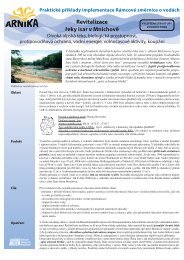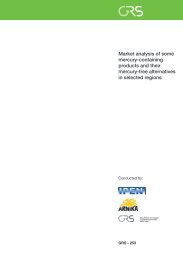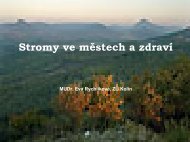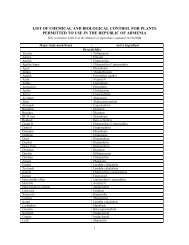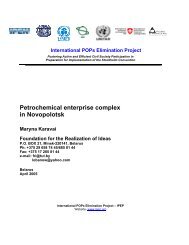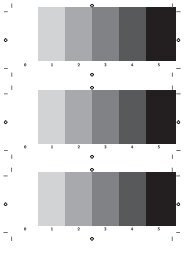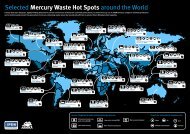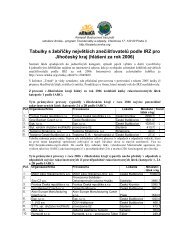Mercury in Fish 1.45 Mb - Arnika
Mercury in Fish 1.45 Mb - Arnika
Mercury in Fish 1.45 Mb - Arnika
You also want an ePaper? Increase the reach of your titles
YUMPU automatically turns print PDFs into web optimized ePapers that Google loves.
Page 13 <strong>Mercury</strong> Policy Project<br />
<strong>Mercury</strong> <strong>in</strong> <strong>Fish</strong><br />
A basic question is, how many consumers <strong>in</strong><br />
each country will have exposures represented<br />
by the various scenarios? We assess that issue<br />
health hazards <strong>in</strong> each country and culture<br />
exam<strong>in</strong>ed here. There are, however, important<br />
differences <strong>in</strong> the risk scenarios from the<br />
different countries, which have critical riskmanagement<br />
implications <strong>in</strong> each case. It is<br />
therefore worth exam<strong>in</strong><strong>in</strong>g the different risk<br />
scenarios <strong>in</strong> some detail.<br />
INDIA: The people of West Bengal eat a<br />
of methylmercury. These factors comb<strong>in</strong>e<br />
to produce generally high exposure. All the<br />
reference levels are exceeded, often by wide<br />
marg<strong>in</strong>s, <strong>in</strong> the majority of Indian exposure<br />
scenarios shown <strong>in</strong> Table 6.<br />
The assumptions used to calculate these<br />
exposures are not “worst case” choices. In<br />
consumption of 500 g, slightly below the<br />
median <strong>in</strong>take shown by the survey of Kolkata<br />
<strong>in</strong>take of 750 g/week, which represents the 90 th<br />
percentile <strong>in</strong>take <strong>in</strong> that survey. Some West<br />
Bengali consumers undoubtedly eat twice or<br />
<strong>in</strong>take we used <strong>in</strong> Table 6. Children older<br />
than 5 years consume adult-sized portions,<br />
accord<strong>in</strong>g to the survey. Regard<strong>in</strong>g mercury<br />
and used the average mercury content across<br />
all the species tested at each site. It is primarily<br />
from different locations that account for most<br />
of the differences <strong>in</strong> calculated exposure.<br />
Overall, our Indian exposure scenarios show<br />
that a large majority of consumers <strong>in</strong> most<br />
parts of West Bengal exceed the WHO PTWI<br />
for prenatal exposure, because of their high-<br />
at the site with the highest average mercury<br />
from Jharkhali would exceed the WHO PTWI<br />
for general exposure by 8.8 times, and a typical<br />
adult’s <strong>in</strong>take exceeds that reference level<br />
<strong>in</strong> half of the locations modeled. Consumers<br />
shown <strong>in</strong> our examples, would exceed safety<br />
limits by even wider marg<strong>in</strong>s, as could those<br />
higher-than-average mercury content, and<br />
children with smaller body weights.<br />
THE PHILIPPINES: The people of the<br />
consumption, estimated at 31 kg per capita per<br />
year, or about 600 g per week, on average. 21<br />
Our assumption that a consumer might eat<br />
500 g of the high-mercury tested species <strong>in</strong> a<br />
week is thus slightly below average <strong>in</strong> terms<br />
to be far above average <strong>in</strong> terms of likely<br />
quantities <strong>in</strong> the Philipp<strong>in</strong>es <strong>in</strong>clude sard<strong>in</strong>es,<br />
roundscad, various types of tuna, mackerel,<br />
squid, and anchovies, among others. Based on<br />
have relatively low mercury levels, 22 while<br />
data are unavailable for others. But the highmercury,<br />
predatory species we tested appear<br />
to be eaten <strong>in</strong> smaller total volumes than many<br />
more expensive and thus more likely to be sold<br />
<strong>in</strong> restaurants, or eaten by upscale customers<br />
occasionally. They may also be consumed by<br />
varieties are caught. 23



